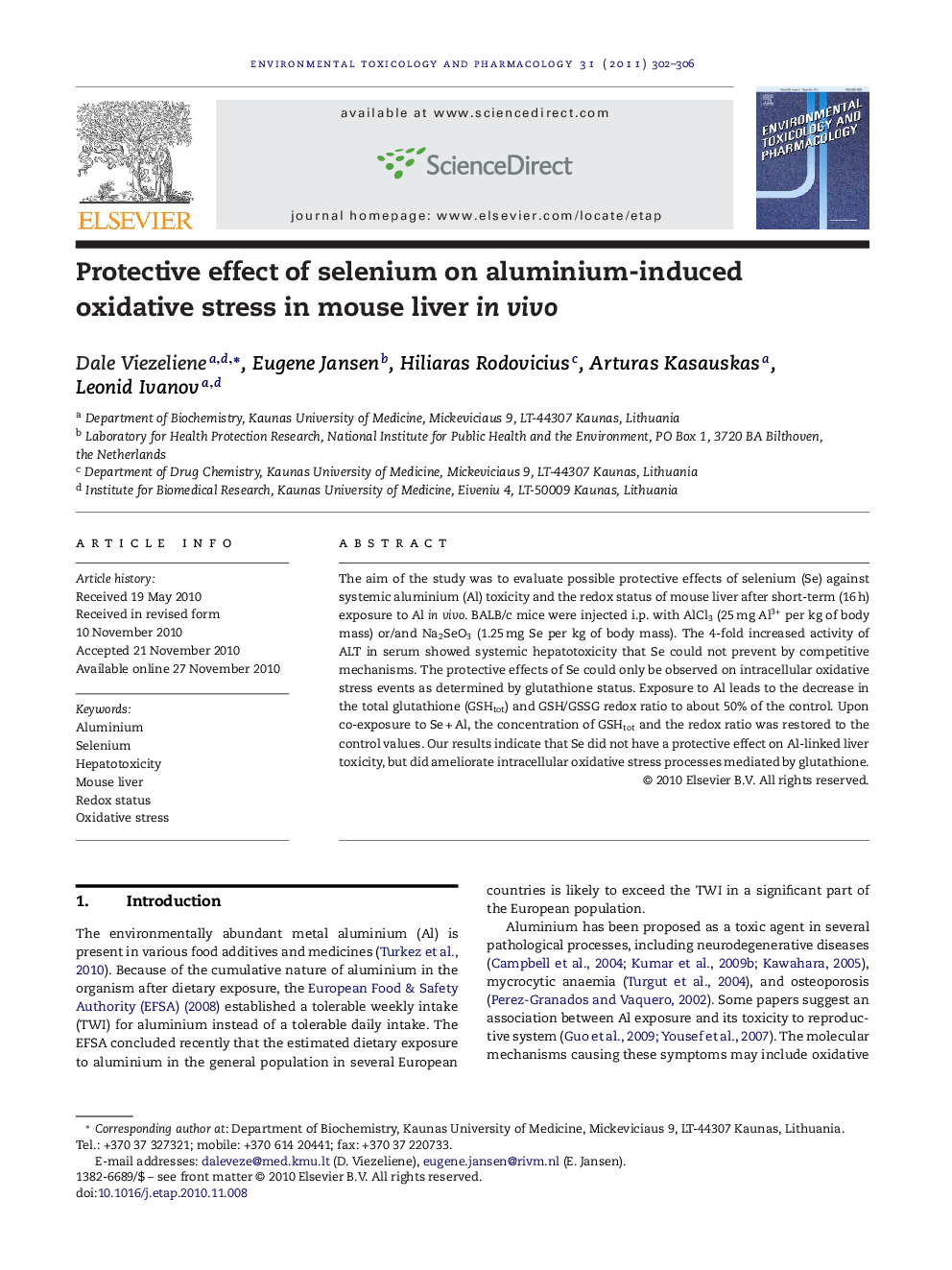| Article ID | Journal | Published Year | Pages | File Type |
|---|---|---|---|---|
| 2583687 | Environmental Toxicology and Pharmacology | 2011 | 5 Pages |
The aim of the study was to evaluate possible protective effects of selenium (Se) against systemic aluminium (Al) toxicity and the redox status of mouse liver after short-term (16 h) exposure to Al in vivo. BALB/c mice were injected i.p. with AlCl3 (25 mg Al3+ per kg of body mass) or/and Na2SeO3 (1.25 mg Se per kg of body mass). The 4-fold increased activity of ALT in serum showed systemic hepatotoxicity that Se could not prevent by competitive mechanisms. The protective effects of Se could only be observed on intracellular oxidative stress events as determined by glutathione status. Exposure to Al leads to the decrease in the total glutathione (GSHtot) and GSH/GSSG redox ratio to about 50% of the control. Upon co-exposure to Se + Al, the concentration of GSHtot and the redox ratio was restored to the control values. Our results indicate that Se did not have a protective effect on Al-linked liver toxicity, but did ameliorate intracellular oxidative stress processes mediated by glutathione.
